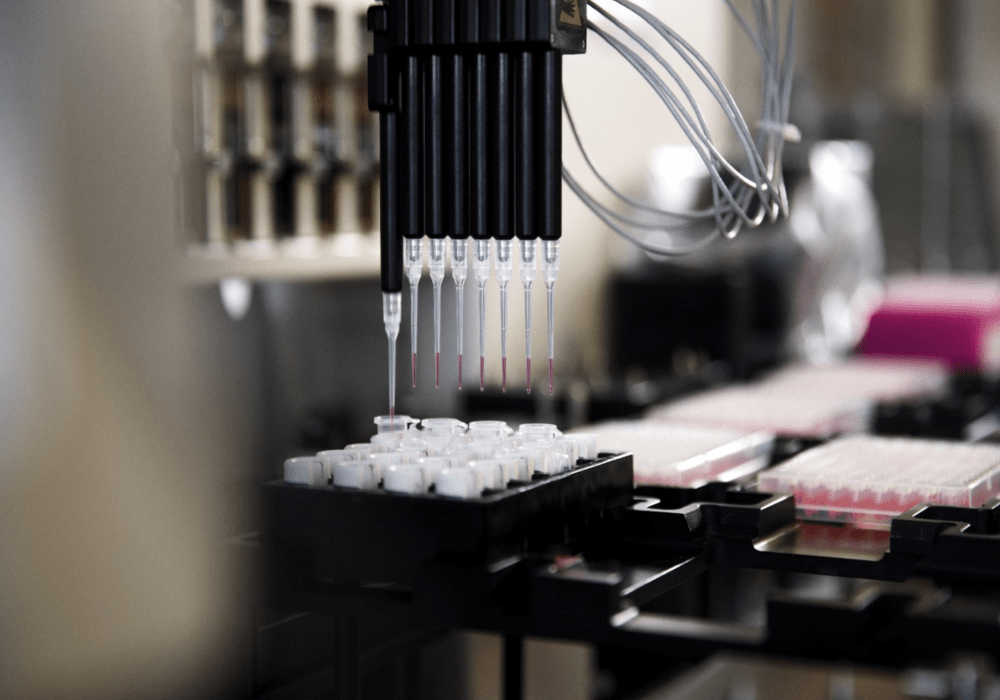Approximately 10% of cancers are linked to a germline (inherited) pathogenic variant, which can be confirmed with germline susceptibility testing of a blood, skin, or saliva sample (not a tumor specimen). Identification of individuals with a germline pathogenic variant helps clinicians predict their risk for developing malignancies and provide recommendations for cancer prevention and early detection. If an individual develops a tumor, subsequent somatic predictive or prognostic biomarker tumor testing may be indicated. In some cases, a germline pathogenic variant may inform decisions about cancer-directed therapy, such as the use of a PARP inhibitor in those with a BRCA1 or BRCA2 pathogenic variant.
Testing for somatic (tumor-specific) pathogenic variants is an evolving standard of care across many cancer types. Somatic biomarker testing typically includes hundreds of genes, some of which may be associated with germline risk. Recognizing germline variants on somatic testing reports is essential not only to provide optimal care for the tested individual but also to initiate cascade genetic testing in at-risk family members to determine who would benefit from intensive prevention and screening recommendations. It involves a series of steps that begin when patients and families receive their somatic biomarker results.
Consider Red Flags for Germline Risk
First, determine whether a patient meets the criteria for germline testing and should be offered testing regardless of their somatic biomarker test results:
- A cancer diagnosis at age 50 or younger, or multiple primary cancers
- Rare tumors, such as ovarian, pancreatic, paragangliomas, pheochromocytomas, medullary thyroid, or male breast cancer in the patient or family
- Unique tumor characteristics, including Gleason 7 or higher prostate cancer, triple-negative breast cancer, or microsatellite instability
- Multiple relatives on the same side of the family with the same cancer or other cancers associated with the same germline risk
- Family history of a known germline pathogenic variant
Review the Somatic Report for Pathogenic Variants
For patients without red flags suggestive of germline risk, the next step is evaluating the somatic biomarker testing report. Somatic testing alone cannot confirm or rule out a germline variant, and only some genes on those reports are associated with hereditary cancer risk. If somatic biomarker testing identifies a pathogenic variant in a gene associated with germline risk, refer the patient to a genetics professional for evaluation and consideration for germline testing. The Jackson Laboratory maintains a list of cancer susceptibility genes commonly associated with germline cancer risk.
Although pathogenic or likely pathogenic variants in hereditary cancer susceptibility genes are a concern, typically patients are not offered germline testing for a variant of unknown significance in a cancer susceptibility gene because it is not actionable.
Consider the Type of Testing
The type of testing (somatic only or paired somatic and germline) is an important factor in assessing whether a patient needs further testing. Somatic testing looks for changes in the tumor cells. Because it assesses only a tumor sample, it is not designed to identify whether the variants in the cancer cells are also present in the germline.
Paired somatic and germline testing assesses both tumor and nontumor samples (typically blood or saliva). If it identifies a germline pathogenic variant, the patient and their family members who might benefit from cascade testing should be referred to a genetics professional.
However, paired somatic and germline testing does not always comprehensively assess for all variants associated with germline risk, and the patient could have a germline variant in a cancer susceptibility gene that was not part of the test. A genetics professional can determine whether additional germline testing is needed.
Review the Variant Allele Frequency
On somatic testing of tumor cells, a variant allele frequency (VAF) of 40%–60% is suggestive—although not completely predictive—of the variant being present in the germline. A VAF less than 40% may be confirmed as germline, and a VAF greater than 60% may be limited to the tumor. A genetics professional can offer guidance on the need for additional germline testing.
Provide Patient Education
Patients and families may not recognize the purposes and differences surrounding germline and somatic testing. Patient education can help them find clarity and understand why their personal and family red flags suggestive of hereditary cancer make it appropriate for referral to a genetics professional.
Genetics professionals explain the potential benefits, risks, limitations, and consequences of germline testing and use shared decision-making that incorporates patient preferences and motivations to ensure informed consent. Oncology nurses can use ONS’s Genetic Counseling and You video in the ONS Genomics and Precision Oncology Learning to help prepare patients for their appointment.
Although somatic biomarker testing primarily informs treatment decisions, careful review of the report can also find potential germline risk, allowing affected individuals and families to implement aggressive screening and early cancer prevention, including risk-reducing surgeries, which may decrease malignancy-related morbidity and mortality.






